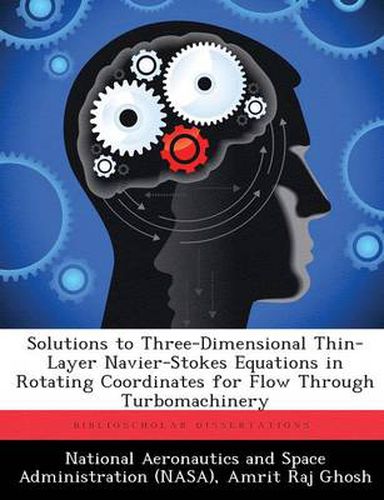Readings Newsletter
Become a Readings Member to make your shopping experience even easier.
Sign in or sign up for free!
You’re not far away from qualifying for FREE standard shipping within Australia
You’ve qualified for FREE standard shipping within Australia
The cart is loading…






This title is printed to order. This book may have been self-published. If so, we cannot guarantee the quality of the content. In the main most books will have gone through the editing process however some may not. We therefore suggest that you be aware of this before ordering this book. If in doubt check either the author or publisher’s details as we are unable to accept any returns unless they are faulty. Please contact us if you have any questions.
The viscous, Navier-Stokes solver for turbomachinery applications, MSUTC has been modified to include the rotating frame formulation. The three-dimensional thin-layer Navier-Stokes equations have been cast in a rotating Cartesian frame enabling the freezing of grid motion. This also allows the flow-field associated with an isolated rotor to be viewed as a steady-state problem. Consequently, local time stepping can be used to accelerate convergence. The formulation is validated by running NASA’s Rotor 67 as the test case. results are compared between the rotating frame code and the absolute frame code. The use of the rotating frame approach greatly enhances the performance of the code with respect to savings in computing time, without degradation of the solution.
$9.00 standard shipping within Australia
FREE standard shipping within Australia for orders over $100.00
Express & International shipping calculated at checkout
This title is printed to order. This book may have been self-published. If so, we cannot guarantee the quality of the content. In the main most books will have gone through the editing process however some may not. We therefore suggest that you be aware of this before ordering this book. If in doubt check either the author or publisher’s details as we are unable to accept any returns unless they are faulty. Please contact us if you have any questions.
The viscous, Navier-Stokes solver for turbomachinery applications, MSUTC has been modified to include the rotating frame formulation. The three-dimensional thin-layer Navier-Stokes equations have been cast in a rotating Cartesian frame enabling the freezing of grid motion. This also allows the flow-field associated with an isolated rotor to be viewed as a steady-state problem. Consequently, local time stepping can be used to accelerate convergence. The formulation is validated by running NASA’s Rotor 67 as the test case. results are compared between the rotating frame code and the absolute frame code. The use of the rotating frame approach greatly enhances the performance of the code with respect to savings in computing time, without degradation of the solution.